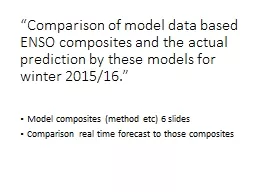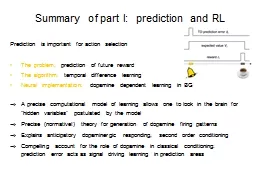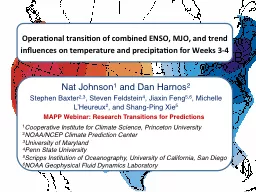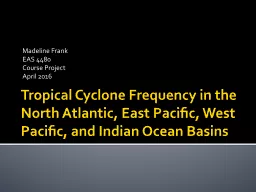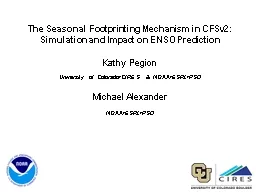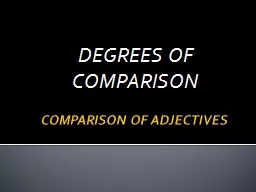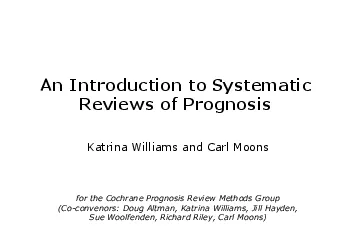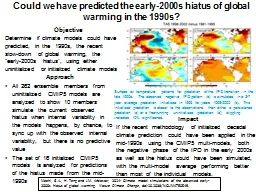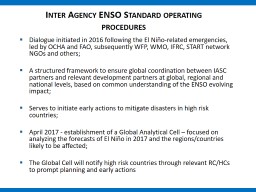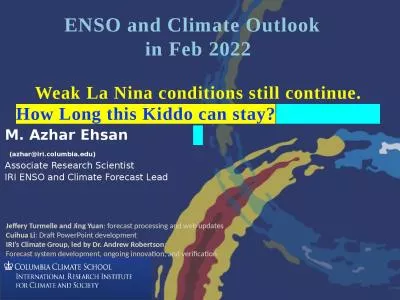PPT-“Comparison of model data based ENSO composites and the actual prediction by these
Author : stingraycartier | Published Date : 2020-06-23
Model composites method etc 6 slides Comparison real time forecast to those composites ENSO Precipitation and Temperature Forecasts in the NMME Composite Analysis
Presentation Embed Code
Download Presentation
Download Presentation The PPT/PDF document "“Comparison of model data based ENSO ..." is the property of its rightful owner. Permission is granted to download and print the materials on this website for personal, non-commercial use only, and to display it on your personal computer provided you do not modify the materials and that you retain all copyright notices contained in the materials. By downloading content from our website, you accept the terms of this agreement.
“Comparison of model data based ENSO composites and the actual prediction by these: Transcript
Download Rules Of Document
"“Comparison of model data based ENSO composites and the actual prediction by these"The content belongs to its owner. You may download and print it for personal use, without modification, and keep all copyright notices. By downloading, you agree to these terms.
Related Documents

